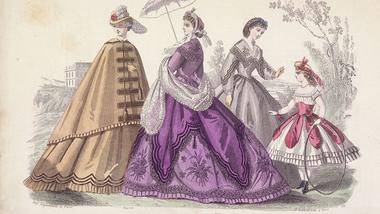
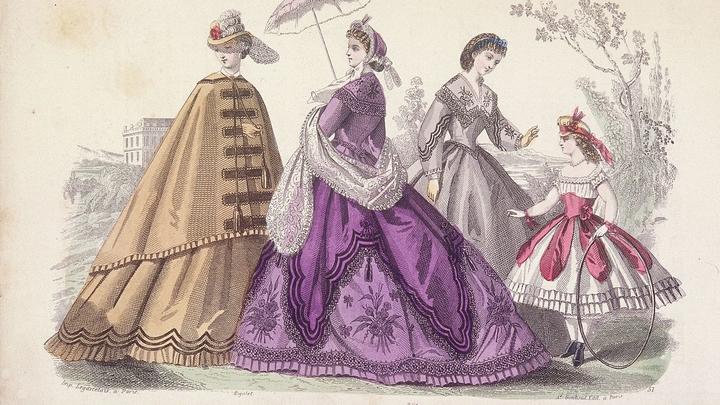
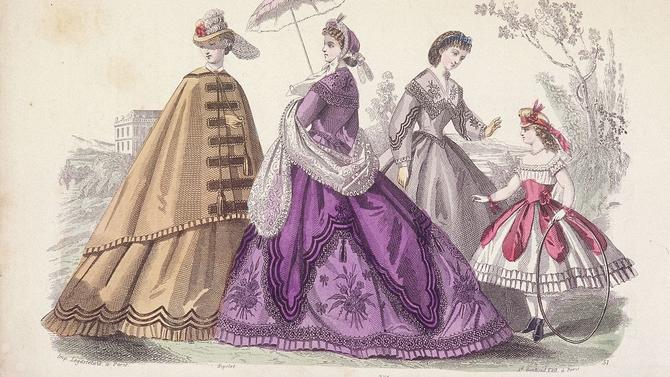
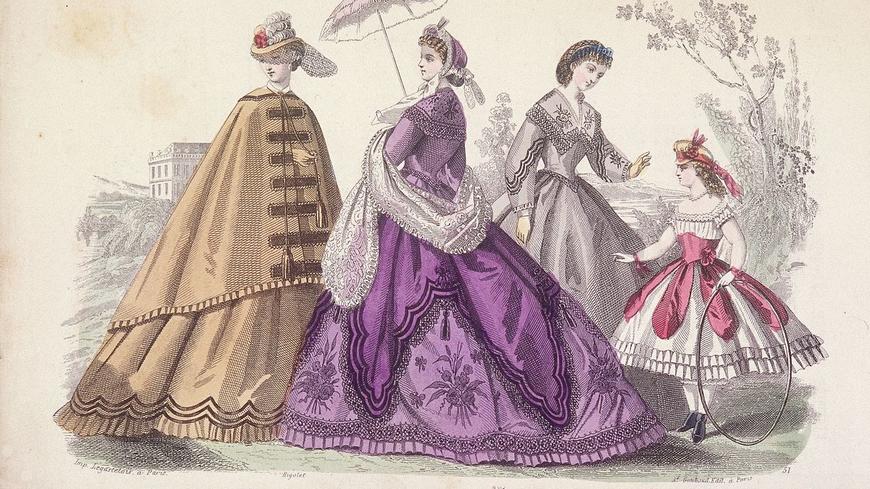
Clothes have always been an important part of a representation of a person. Due to the luxury of dress, people judge the social status and prosperity of the person. The way of clothing was changing with the development of society, having more abilities people started dressing more pretentiously. Fashion reached the highest level of decoration of clothes and people in the 18th century when France was dictating the rules. In the 19th century, pompous “rococo” with its undergarment “grand paniers” was replaced by 1800’s modest dresses the (Hoopskirt). Until 1820 the silhouettes of dresses had Empire lines, at that time people wanted simplicity after bright colors of the previous period, dresses of that time were similar to high waist night dresses. Women clothes’ were simple with straight silhouettes without any features that were inconvenient and made life more difficult. The next stage of fashion development was Victorian style clothing that brought back crinolines almost at the same sizes as were “grand paniers”. With the beginning of her governing the fashion started changing due to Queen’s desires, crinolines came back to the dresses. In the 60s the ruling of enormous crinolines ended it was substituted by bustles. The aim of this paper is to show the rise and fall in women’s use of crinolines and its modifications in the 50-70s of the 19th century.
When Queen Victoria started her ruling in 1837, England was the country that changed the way people dressed. Queen Victoria was not as privileged as her predecessors, her father died early and left the family with debts, the wardrobe of Victoria was more than modest it has only one dress that was substituted for another when the girl grew up. The mood of Queen was the main tool that moved the fashion of that period, one of the distinctive features of dresses of that time was subtle often dark colors, which were less easily solid than bright colors of “rococo” period. Crinolines were present in this period until the 40s this word only meant a horsehair petticoat that gave the volume for the skirt. In 1850 the meaning of crinoline was a bit changed, crinoline denoted a stiffened petticoat and the variations of its size were uncountable (Truly Victorian, Round Cage Crinoline). Crinoline was a controversial element of a woman dress, men often were mocking it, but for women this feature sometimes was useful it could hide the peculiarities of a figure or a pregnancy (1850’s dress). Moving around in such construction was not that hard, but crinoline took a lot of space and in some cases, it was hard to greet the person. Sleeve “pagoda” a funnel-shaped sleeve became one of the most used models of the sleeve (Pagoda sleeve). This kind of sleeves was used for greater contrast between the waist and the skirt, pointing at the diminutiveness of a woman. However, nowadays people remember crinoline of Victorian époque as a representative of the prudent Victorian society.
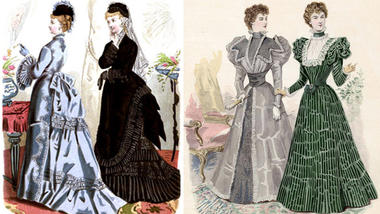
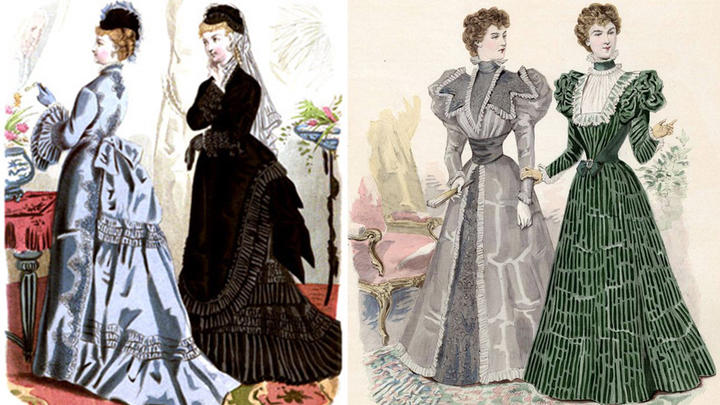
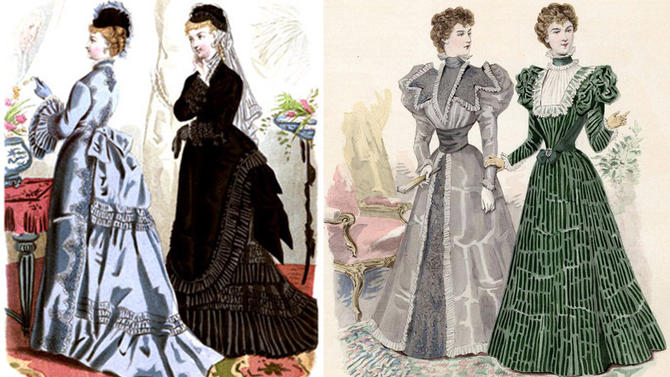
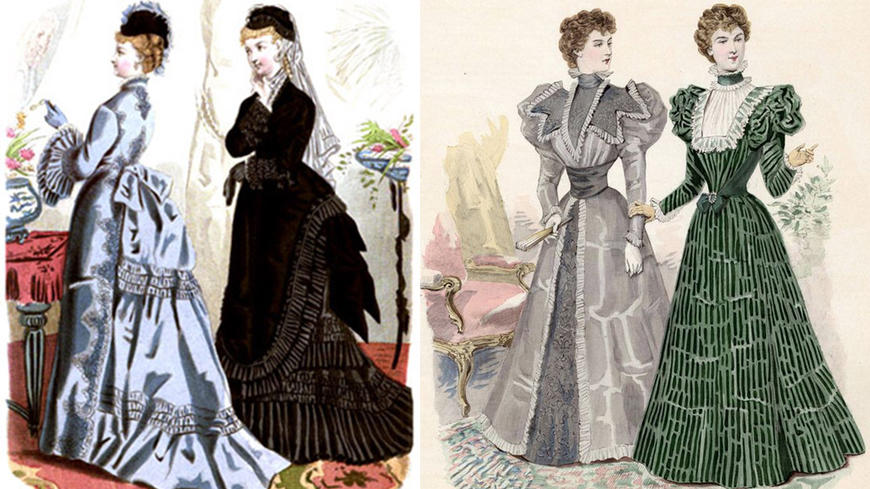
Attached file: Crinoline Dresses. Women fashion of 18-19 centuries in France and England.docx
Click download to get access to a full version of the paper


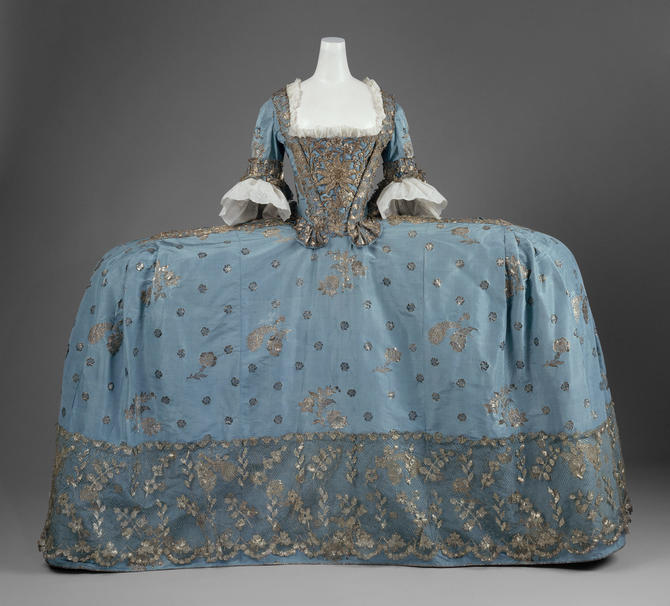
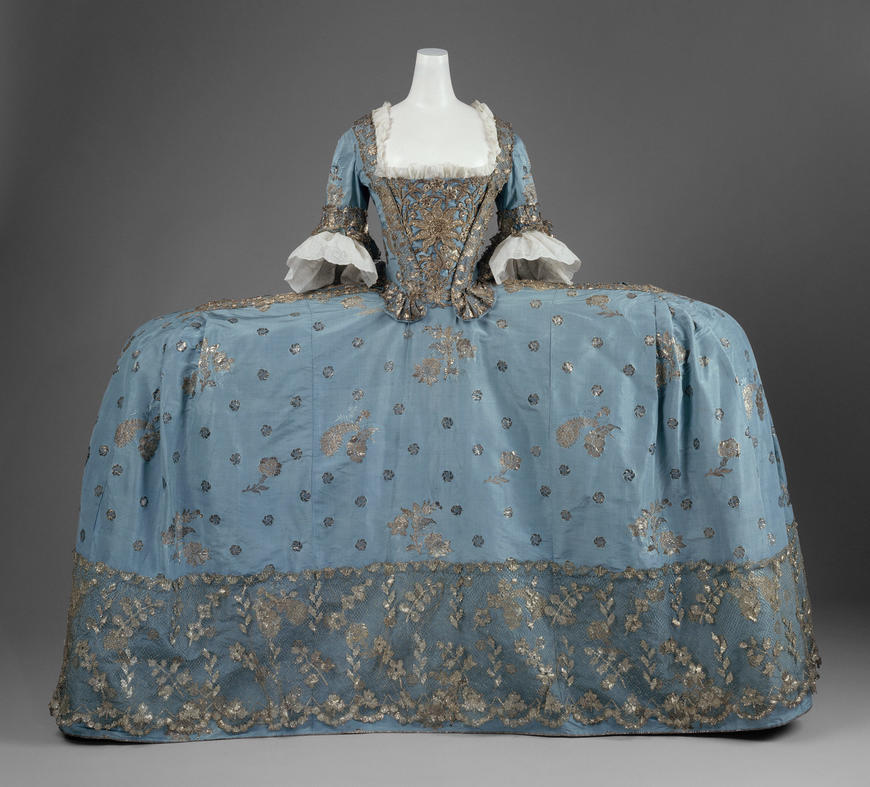
The drastic changes met crinoline in 60s years when the round cage crinoline was substituted by elliptical cage crinoline (Truly Victorian, Elliptical Cage Crinoline). Except of the innovations in the form new crinolines changed the line that outline the waist of a woman, the transition between the waist and the crinoline became smoother, the fabric on the front part of it is straight, while the back was massive with masses of rushes or “tails” that were in form of two long endings of a belt (Pingat). Also, at that time were discovered chemical dyes that changed the color palette of dresses. One of the features that united the dresses of that time was modesty, the dresses covered almost every inch of the body, exception were evening dresses with low shoulders. The sleeves differed from the sleeves of the 50s, it was tight until the elbow but closer to wrist it widened and ended in the tight cuff, this type of sleeved called “bishop sleeve”. The crinoline was still present and the dresses called “pagoda”, with its three levels of ruches this dress needed it more than any previous variant of the dress. In 1867 the form of crinoline changed its front part is almost absent, allowing the legs to move more. Charles Worth native of England studied in France and became the father of “haute couture”, he decided to change the crinoline construction. As the result crinoline was forced out by bustles - a pillow attached to the skeleton of the bustle a little lower than waist (Bustle Dresses). Only, at first sight, it looked more practical than usual crinolines, but that time a woman had a problem with sitting and also the fabric was too long and swept the ground.
The fashion of the 1870s was not so different from 60s, the only issue was with the bustle – it was becoming bigger till the 90s of the 19th century. Worth also brought back the dresses “a la polonaise” to the use, this dress is an additional dress that was put on the skirt and bodice. It could be tightened in the back so it formed folds. The train of evening dresses was becoming longer and it was decorated with different ribbons or rushes. The decoration of dresses was luxurious starting from beads and ending in the feather of different colors. Running from the unrealistic looks of 50-60s years Worth created a new style that was mainly neglected.
Crinoline was always the part of clothing and only in the middle of the 19th century the origin of this word was altered, changing the simply petticoat into massive constructions that were complicating the movement and the life in the whole. It looked beautiful until Worth decided to enlarge the sizes of rings in the crinoline from that time crinoline lost its charm becoming an odd part of the dress. The hard life of crinoline ended its edge in the 60s, Worth modified it adding the bustle in the back of a woman at the top level of construction. The idea of making women tenderer was good but the bustle was as inconvenient as the crinoline.